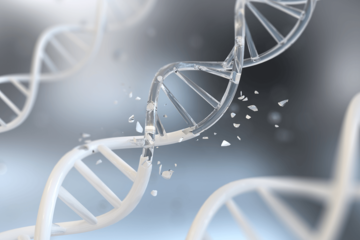Browse
Education
Data science
Data science is an interdisciplinary field that uses scientific methods, processes, algorithms and systems to extract knowledge and insights from noisy, structured and unstructured data, and apply knowledge and actionable insights from data across a broad range of application domains. Data science is related to data mining, machine learning and big data.
Read more

By: rupali
Due Date: Dec, 17, 2021
Agri-food systems
+5
Leave a comment
Artificial intelligence and Machine learning
Artificial intelligence is used to reduce or avoid repetitive tasks. For instance, AI can repeat a task continuously, without fatigue. In fact, AI never rests, and it is indifferent to the task to carry out
Artificial intelligence improves an existing product. Before the age of machine learning, core products were building upon hard-code rules. Firms introduced artificial intelligence to enhance the functionality of the product rather than starting from scratch to design new products. You can think of a Facebook image. A few years ago, you had to tag your friends manually. Nowadays, with the help of AI, Facebook gives you a friend's recommendation.
Machine learning is a distinct subset of AI that trains a machine how to learn. Machine learning models look for patterns in data and try to conclude. In a nutshell, the machine does not need to be explicitly programmed by people. The programmers give some examples, and the computer is going to learn what to do from those samples.
Read more

By: richa tripathi
Due Date: Dec, 20, 2021
Education
Leave a comment

No Preview Available
first computers
The first computers were used primarily for numerical calculations. However, as any information can be numerically encoded, people soon realized that computers are capable of general-purpose information processing. Their capacity to handle large amounts of data has extended the range and accuracy of weather forecasting. Their speed has allowed them to make decisions about routing telephone connections through a network and to control mechanical systems such as automobiles, nuclear reactors, and robotic surgical tools. They are also cheap enough to be embedded in everyday appliances and to make clothes dryers and rice cookers “smart.”
Read more

By: rupali
Due Date: Aug, 26, 2021
Agri-food systems
+2
Leave a comment

Atomic model
Most matter consists of an agglomeration of molecules, which can be separated relatively easily. Molecules, in turn, are composed of atoms joined by chemical bonds that are more difficult to break. Each individual atom consists of smaller particles—namely, electrons and nuclei. These particles are electrically charged, and the electric forces on the charge are responsible for holding the atom together. Attempts to separate these smaller constituent particles require ever-increasing amounts of energy and result in the creation of new subatomic particles, many of which are charged.
As noted in the introduction to this article, an atom consists largely of empty space. The nucleus is the positively charged centre of an atom and contains most of its mass. It is composed of protons, which have a positive charge, and neutrons, which have no charge. Protons, neutrons, and the electrons surrounding them are long-lived particles present in all ordinary, naturally occurring atoms. Other subatomic particles may be found in association with these three types of particles. They can be created only with the addition of enormous amounts of energy, however, and are very short-lived.
Read more

By: rupali
Due Date: Jul, 30, 2021
Culture and society
+1
Leave a comment
No Preview Available
Binary molecular (covalent) compounds
Binary molecular (covalent) compounds are formed as the result of a reaction between two nonmetals. Although there are no ions in these compounds, they are named in a similar manner to binary ionic compounds. The nomenclature of binary covalent compounds follows these rules:
The first element in the formula is given first, using the element’s full name.
The second element is named as if it were an anion.
Prefixes are used to denote the numbers of atoms present. If the first element exists as a single atom, the prefix mono- is omitted. For example, CO is called carbon monoxide rather than monocarbon monoxide.
Read more

By: Edwin Castel
Due Date: Jul, 31, 2021
Youth empowerment
+1
Leave a comment

Important and easy ways of Conserve Water
Conserving water helps us by supplying more amount of water for longer usage. It has become necessary in all areas because these natural resources are reducing along with the increasing population and their usages.
There are several ways to conserve water. Here are some important and easy ways for the conservation of water
Keeping the tap closed when not in use.
Check for the openings or leaks in water distribution pipes.
Make sure to use collected rainwater for gardening or washing purpose.
Always have a measure of how many buckets of water is wasted in a day and try to reduce.
Do not run more water than necessary while washing and cleaning clothes, utensils, etc.
Do not prolong your bathing. Go for a quick shower rather than wasting buckets of water
Rainwater harvesting is one of the best method used for conserving water. There are different methods used to preserve rainwater instead of getting it wasted.
Read more

By: rupali
Due Date: Dec, 27, 2021
Agri-food systems
+1
Leave a comment

Sun, Moon, and brightest planets
The Sun, Moon, and brightest planets were visible to the naked eyes of ancient astronomers, and their observations and calculations of the movements of these bodies gave rise to the science of astronomy. Today the amount of information on the motions, properties, and compositions of the planets and smaller bodies has grown to immense proportions, and the range of observational instruments has extended far beyond the solar system to other galaxies and the edge of the known universe. Yet the solar system and its immediate outer boundary still represent the limit of our physical reach, and they remain the core of our theoretical understanding of the cosmos as well. Earth-launched space probes and landers have gathered data on planets, moons, asteroids, and other bodies, and this data has been added to the measurements collected with telescopes and other instruments from below and above Earth’s atmosphere and to the information extracted from meteorites and from Moon rocks returned by astronauts. All this information is scrutinized in attempts to understand in detail the origin and evolution of the solar system—a goal toward which astronomers continue to make great strides.
Read more

By: rupali
Due Date: Oct, 23, 2021
Water, energy, and the...
+1
Leave a comment
No Preview Available
Myxomatosis
Myxomatosis, formally infectious myxomatosis, or myxomatosis cuniculi, a highly fatal infectious viral disease of rabbits. It is characterized by fever, swelling of the mucous membranes, and the presence of nodular skin tumours. The disease exists naturally in populations of certain South American rabbits of the genus Sylvilagus and has been introduced into western Europe and Australia as a means of rabbit population control.
Read more

By: rupali
Due Date: Nov, 20, 2021
Culture and society
+1
Leave a comment

No Preview Available
Water
Water occurs as a liquid on the surface of Earth under normal conditions, which makes it invaluable for transportation, for recreation, and as a habitat for a myriad of plants and animals. The fact that water is readily changed to a vapour (gas) allows it to be transported through the atmosphere from the oceans to inland areas where it condenses and, as rain, nourishes plant and animal life
Read more

By: rupali
Due Date: Jul, 30, 2021
Agri-food systems
+1
Leave a comment

Leaf IN botany
Leaf, in botany, any usually flattened green outgrowth from the stem of a vascular plant. As the primary sites of photosynthesis, leaves manufacture food for plants, which in turn ultimately nourish and sustain all land animals. Botanically, leaves are an integral part of the stem system. They are attached by a continuous vascular system to the rest of the plant so that free exchange of nutrients, water, and end products of photosynthesis (oxygen and carbohydrates in particular) can be carried to its various parts. Leaves are initiated in the apical bud (growing tip of a stem) along with the tissues of the stem itself. Certain organs that are superficially very different from the usual green leaf are formed in the same manner and are actually modified leaves; among these are the sharp spines of cacti, the needles of pines and other conifers, and the scales of an asparagus stalk or a lily bulb.
Read more

By: rupali
Due Date: Jul, 15, 2021
Culture and society
+1
Leave a comment
Students with ADHD
Students with ADHD often have the most trouble attending during drill-and-practice assignments because of the repetitive nature of the tasks. Peer-mediated approaches such as those enumerated below are particularly effective for students with ADHD in such cases, because they increase students’ opportunities for engagement and active learning (Piffner, 2011). In creating peer-mediated activities, the teacher may need to choose students whose skill levels complement each other. Students with and without attention difficulties and impulsivity should be considered for peer partnerships. o Peer Tutoring: Peer tutoring is one of the more effective strategies for students with ADHD, because it provides many of the same supports as one-to-one instruction. It facilitates the acquisition of both academic and social skills. Peer tutoring is most effective when training is provided to participating students (Piffner, 2011). Tutors need to be taught how to be prepared with materials needed for the session and how to give positive and corrective feedback to their partner (Greenwood & Delquadri, 1995). o Cooperative Learning: Carefully structured cooperative learning groups in which each student is assigned a role and has clear expectations for desired outcomes are very helpful for students with ADHD. The more structured the cooperative activity, the more likely it is that these students will succeed. o Sharing Strategies: Think, Pair, Share/Square Share/Group Share: Using this approach, students work with peer partners to discuss the lesson, check each other’s work, and share strategies.
Read more

By: Edwin Castel
Due Date: Oct, 31, 2021
Youth empowerment
+1
Leave a comment

Role-and-Reference Grammar (RRG) and Systemic Linguistics (SL)
"There are very many functionalist approaches which have been put forward, and they are often very different from one another. Two prominent ones are Role-and-Reference Grammar (RRG), developed by William Foley and Robert Van Valin, and Systemic Linguistics (SL), developed by Michael Halliday. RRG approaches linguistic description by asking what communicative purposes need to be served and what grammatical devices are available to serve them. SL is chiefly interested in examining the structure of a large linguistic unit--a text or a discourse--and it attempts to integrate a great deal of structural information with other information (social information, for example) in the hope of constructing a coherent account of what speakers are doing.
"Functionalist approaches have proved fruitful, but they are usually hard to formalize, and they often work with 'patterns,' 'preferences,' 'tendencies,' and 'choices,' in place of the explicit rules preferred by non-functional linguists."
Read more

By: rupali
Due Date: Jun, 30, 2023
Agri-food systems
+3

Leave a comment